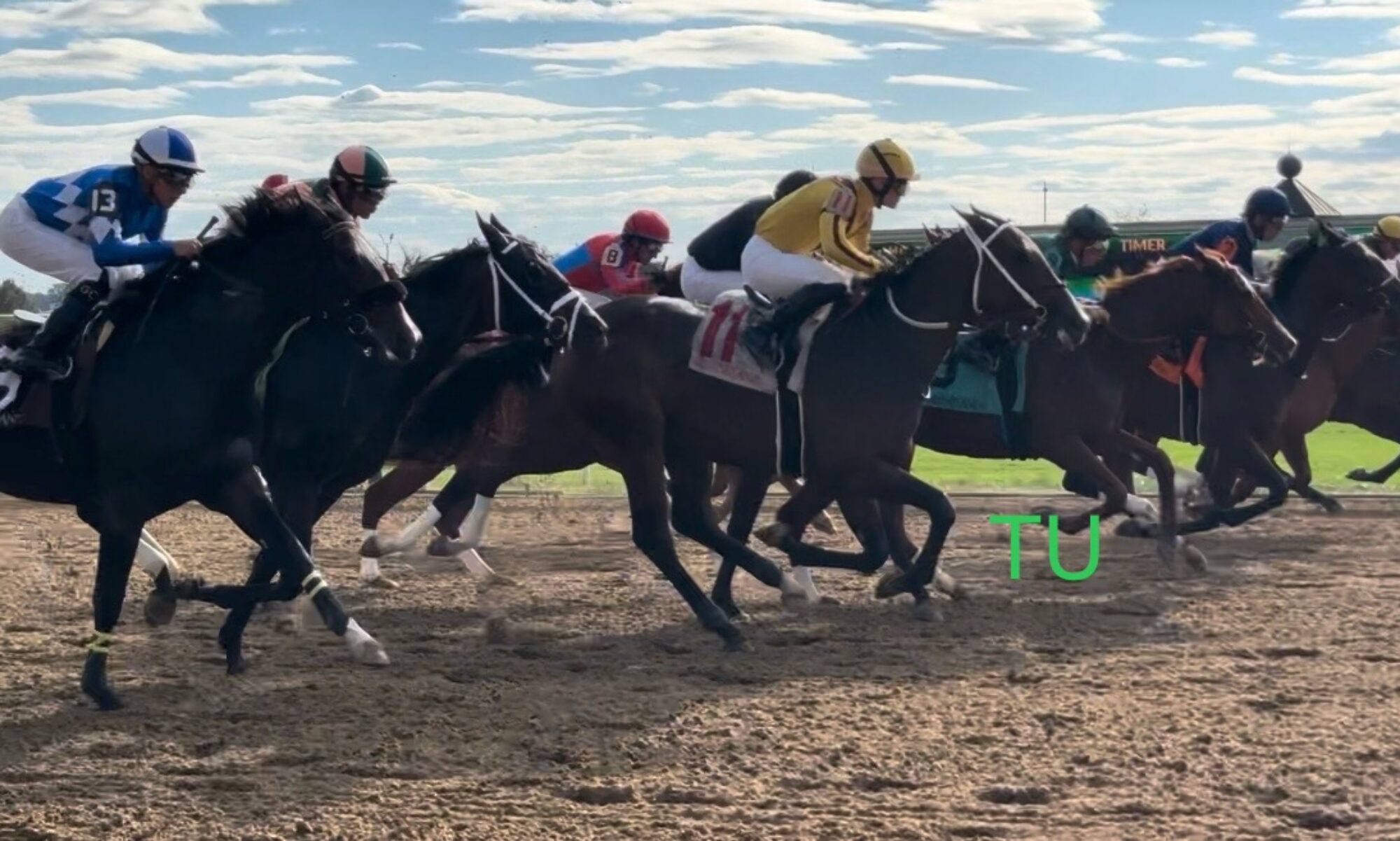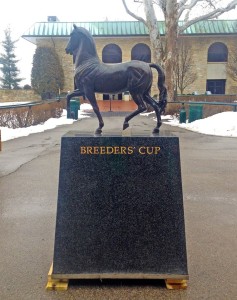The Breeders’ Cup trophy was delivered to the grounds of Keeneland race course in Lexington, KY today. On October 30th and 31st the Breeders’ Cup races will be held at Keeneland for the first time ever. Tickets go on sale at noon, Eastern Standard Time, tomorrow. Follow Breeders’ Cup World Championships on Facebook or @BreedersCup on Twitter for this picture and more up to date information. For now, let’s talk about this statue!
The Breeders’ Cup is a 2 day race that began in 1984 to showcase the best in Thoroughbred racing worldwide. This event marks the end of the racing season. Various race tracks in the United States, and once in Canada, have hosted the annual races. To run in the Breeders’ Cup, a Thoroughbred must win a Breeders’ Cup Challenge Qualifying race or, earn enough points in qualifying graded races or, be selected by a panel of experts. Each of the races has a maximum of 14 horses, except only 12 for the Dirt Mile. Seven horses come from the panel and 7 from those winners or, high point scoring horses from the qualifying races. Countries including the United States, France, Australia, England, Argentina, South Africa, Japan, Ireland, Canada and Germany have all had entries. Such a world renown event deserves a special trophy.
The trophy is an ecorche horse. Ecorche is a term, from the French, to describe a figure depicted without its skin to show the appearance of the muscles. This particular ecorche horse is a reproduction of the bronze statue made by Giovanni de Bologna during the Renaissance era, in the late 1580s. It is thought that it may have been created as a study for the Duke Cosimo statue that was made and displayed in 1591 in Florence Italy at the Piazza della Signoria, where it remains even today. When the Breeders’ Cup began they asked Irene French, of Dorset, England, to sculpt an 11 inch replica statue, to be cast in bronze by Morris Singer Bronze Foundry in Basingstoke, England. These trophies are presented to the owners, breeders, trainers and jockeys of the winners in each race. The larger statue pictured above is circulated to each venue that is hosting the current year’s races. The original Statue is at The Museum of Fine Arts at the University of Edinburgh in Scotland. They received the statue, with a large art collection, from Sir James Erskine of Torrie in 1836. Sometimes it is referred to as the Torrie Horse. He obtained the statue from Villa Mattei in Rome in 1803 where it had been since the 17th and 18th centuries. The trophies were made in bronze from the very start until 2008 when they made them in silver for just one year. After the return to bronze they switched to Lalique crystal, made in France, in 2012 and that continues even in 2015.
In addition to the statue, the winning horses get blanketed in yellow and purple flowers. The blanket includes asters, cremons, orchids and chrysanthemums. Since 1988 Kroger’s has made the 96 inch long blankets at their Floral Design Center in Louisville, KY.
I’m hoping for some warm weather soon. I have to get out and see this statue myself!



Great write-up, I’m normal visitor of one’s web site, maintain up the excellent operate, and It is going to be a regular visitor for a lengthy time.
I am glad you are a regular, thank you!